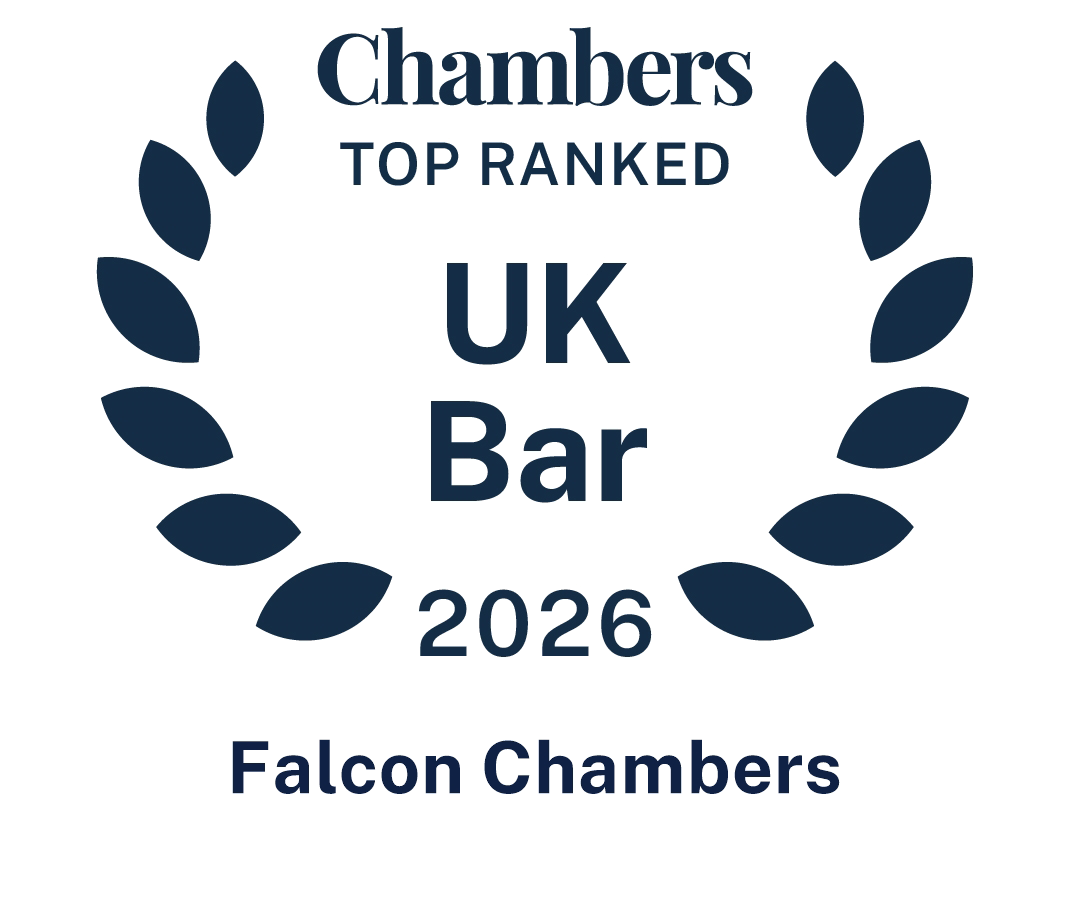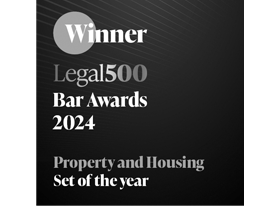Focus on section 121 of the Law of Property Act 1925 18 August 2025
Section 121 – Rentcharges
Summary
- Section 121 of the Law of Property Act 1925 concerns remedies for the enforcement of rentcharges, which are a species of property right capable of existing as legal interests in land.
- They can be used to secure the payment of a periodic sum from the owner of freehold land or to require the freeholder’s contribution towards the provision of communally provided services.
- Section 121 confers extremely powerful remedies upon owners of rentcharges, including the power to take possession or grant a lease of the freeholder’s property, exercisable once rentcharge payments are 40 days in arrear without the need for prior notice or even a prior demand for payment.
- Recognising the need for greater protection against this draconian and disproportionate remedy, section 113 of the Leasehold and Freehold Reform Act 2024 introduced new provisions into the LPA 1925 which provide greater statutory protection to freeholders whose properties are subject to ‘regulated rentcharges’. Those provisions, which are now in force, disapply s.121 with retrospective effect from 27 November 2023.
- These new provisions will not however apply to so-called estate rentcharges which are commonly payable by freeholders on privately owned residential estates. In respect of estate rentcharges, section 121 continues to operate.
*
Section 121 of the Law of Property Act 1925 is headed “Remedies for the recovery of annual sums charged on land”. It forms, together with section 122 (which is in similar terms and applies to ‘rentcharges on rentcharges’), a small part of Part III of the 1925 Act which dealt with rentcharges.
What is a rentcharge?
Rentcharges are a species of property right. Together with easements, charges by way of legal mortgage and rights of entry (i.e. rights of forfeiture), a “rentcharge in possession issuing out of or charged on land being either perpetual or for a term of years absolute” is one of the limited number of interests or charges in or over land (‘incorporeal hereditaments’) which have, since the coming into force of the LPA 1925, been capable of existing as legal interests: s.1(2). Moreover, they are capable of being registered as HM Land Registry with their own registered title, as opposed to being noted on the register of another interest: Land Registration Act 2002, s.2(a)(ii).
Rentcharges are similar in nature to the rent that is payable between a landlord and a tenant. The difference is that they are sums owed by the owner of an estate in land – most commonly a fee simple (freehold) estate – to a third party, the ‘rent owner’, who typically has no other interest in the land.
Rentcharges are more common in some parts of the country, such as Greater Manchester (where they are known as ‘chief rents’), than in others. One of the authors of this article lived in a house as child that was subject to one. They were commonly imposed by housebuilders during the period of rapid industrial expansion to secure an income stream from the sale of freehold land. The price realised by the developer would be split between a capital sum or premium payable by the purchaser at the time of sale and an annual, perpetual rentcharge thereafter (or, in some cases, all of the price would be realised by the rentcharge).
There is no prescribed form of wording to create a rentcharge, although the relevant Land Registry Practice Guide (Practice Guide 56) states that the Registrar will accept clauses of, or approximating, two specified kinds. Both refer expressly to the grant or reservation of a “perpetual rentcharge” (para. 2.1).
Effect of the Rentcharges Act 1977
The creation of rentcharges was, subject to a few exceptions, prospectively abolished by the Rentcharges Act 1977, which came into force on 22 August 1977. One of the retained exceptions was an ‘estate rentcharge’: a rentcharge created for the purpose of making covenants enforceable against successors-in-title or for contributing towards the reasonable cost of provision of services, maintenance, repairs or insurance by the rent owner for the benefit of the burdened land: ss.2(3)(c), 2(4)-(5).
The device commonly used in such cases was to expressly annex a right of forfeiture (right of re-entry) to the rentcharge. The right of re-entry could be exercised by the rent owner in the event of default in performance of the covenants to which the property burdened by the rentcharge was made subject, or in default of payment of the variable service charge contribution.
Estate rentcharges have since flourished as a means of securing the payment of maintenance and service charge obligations by freeholders on schemes of development whose common parts are not adopted by the local authority. In such contexts, they are commonly known as ‘estate charges’. Estate charges form a prominent part of the objections raised in recent years to the ‘fleecehold’ model of estate development.
How does section 121 operate?
As originally enacted, section 121 of the LPA 1925 in large part reproduced section 44 of the Conveyancing Act 1881 (as subsequently amended by, inter alia, section 6 of the Conveyancing Act 1911). It applies to rentcharges created by instruments on or after 31 December 1881: s.121(7).
Section 121 confers on the rent owner certain powerful statutory remedies for the recovery of payment of the rentcharge, albeit subject to contrary intention in the instrument creating it: ss.121(1), (5). Those remedies are as follows:
- Formerly, a right, if the annual sum charged or any part of it was unpaid for 21 days after the due date, for the rent owner to levy distress on the land charged in order to recover the amount outstanding and the rent owner’s costs and expenses: s.121(2). The remedy of distress has however now been abolished and so this right ceased to exist on 6 April 2015. Section 121(2) has thus been repealed.
- A right for the rent owner, if the amount due or any part of it is unpaid for 40 days after the due date:
- To take possession of the charged land and take the income from it until all arrears are paid together with the rent owner’s costs and expenses: s.121(3). This statutory right of entry does not require the rentcharge to have an express right of entry annexed to it.
- To lease the charged land by deed to a trustee for the purpose of recovering the amount due together with costs and expenses: s.121(4). Surplus monies raised must be paid to the person entitled to the reversion on the lease, who would usually be the burdened freeholder; nonetheless, that person finds their right to possession of the charged property curtailed for the duration of the lease. There is no right for the burdened freeholder, even once the arrears and costs have been paid, to recover possession of the land: the lease does not cease automatically upon redemption of the unpaid sums.
Notably, there is no requirement for any form of notice or demand for payment to be made by the rent owner before exercising any of these rights, nor for any notice to be given of their intended exercise. In addition to the statutory remedies conferred by section 121, rent owners also retain the option of suing the freehold owner in debt for the amount due: see e.g Shand v Morgoed Estates Ltd [2010] 1 EGLR 149.
Amendment by the Leasehold and Freehold Reform Act 2024
The remedies conferred by section 121 on rent owners came to be widely recognised as draconian. In Roberts v Lawton [2016] UKUT 395 (TCC), Judge Elizabeth Cooke held that the effect of the passage of time and inflation meant the grant of a rentcharge lease under s.121(4), as a response to arrears in that case of no more than £15, was a “toxic” and “wholly disproportionate” remedy which rendered the owner’s freehold estate worthless: para. 33. Concerns about the scope of the remedies conferred by section 121 also commonly led mortgage lenders to request that amendments be made to the rentcharge deed to curtail its effect, often throwing up unexpected obstacles in otherwise routine conveyancing processes.
Parliament has now intervened. Section 113 of the Leasehold and Freehold Reform Act 2024 (“LFRA 2024”), which was brought into force on 24 July 2024, introduces new sections 120A to 120D and 122A to the LPA 1925, and amends sections 121 and 122, with the following effects:
- A ‘regulated rentcharge’ is one that cannot be created under s.2 of the Rentcharges Act 1977: s.120A(1). So estate rentcharges on freehold estates, which can be created under the 1977 Act, are not therefore regulated rentcharges.
- A rent owner cannot recover or compel payment of arrears of a regulated rentcharge unless a notice demanding payment has first been served on the landowner. The notice must comply with various statutory requirements, and 30 days must have elapsed without the arrears being cleared: s.120B.
- The specified contents of the demand include the name and address of the rent owner, the amount of the arrears, how the arrears have been calculated, details of how to pay, and (in most cases) a copy of the instrument creating the rentcharge and proof of title to it.
- The rent owner is forbidden from levying a charge for the preparation or service of the demand: s.120B(6).
- Notices demanding payment must be either sent by registered post to the landowner by name at the charged land or be affixed or left for the landowner on it: s.120C.
- The Secretary of Estate is empowered to introduce regulations limiting the amounts which landowners can be required to pay in respect of any action to recover payment: s.120D. Such regulations are yet to be made.
- The remedies in s.121 and s.122 of the LPA 1925 are no longer exercisable in respect of sums due under regulated rentcharges, with effect from 27 November 2023: ss.121(1A), 122(1A). There is thus is a limited degree of retrospectivity, which is confirmed by s.113(5) of the LFRA 2024.
- These provisions cannot be outset by any contrary provision: s.122A.
Points to bear in mind going forwards
Rentcharges are admittedly a somewhat obscure topic; but they are a burden on freehold land that can have a dramatically adverse effect upon its marketability and so it is crucial not to miss them. Where land is registered, the express grant or reservation of a new legal rentcharge, or a right of entry annexed to a legal rentcharge, must be compulsorily registered: LRA 2002 s.27(1)(e). Existing rentcharges should also be if they are to bind successors-in-title. So check the Land Registry carefully in all cases.
Although the recent amendments made by the LFRA 2024 are significant, it is crucial to appreciate the estate rentcharges – the type of rentcharge which section 2 of the Rentcharges Act 1977 authorised the continued creation of - are not regulated rentcharges. Estate rentcharges will therefore continue to be subject to the potentially draconian exercise of the rights conferred by s.121. Moreover, estate rentcharges will not be statutorily extinguished by 22 August 2037, as will be the case for regulated rentcharges: Rentcharges Act 1977 s.3(1).
Purchasers of freehold land will therefore continue to need to be advised clearly, and in appropriately emphatic terms, as to the potentially stark consequences of a rent owner exercising the remedies conferred by section 121 of the LPA 1925, where those remedies continue to apply.
Although the recent reforms to the scope of s.121 are welcome and long-overdue, it need hardly be said that neither its enactment nor its persistence on the statute book is a cause for celebration in this centenary year of the LPA 1925.
Download: Focus on section 121 of the Law of Property Act 1925
Back to articles








